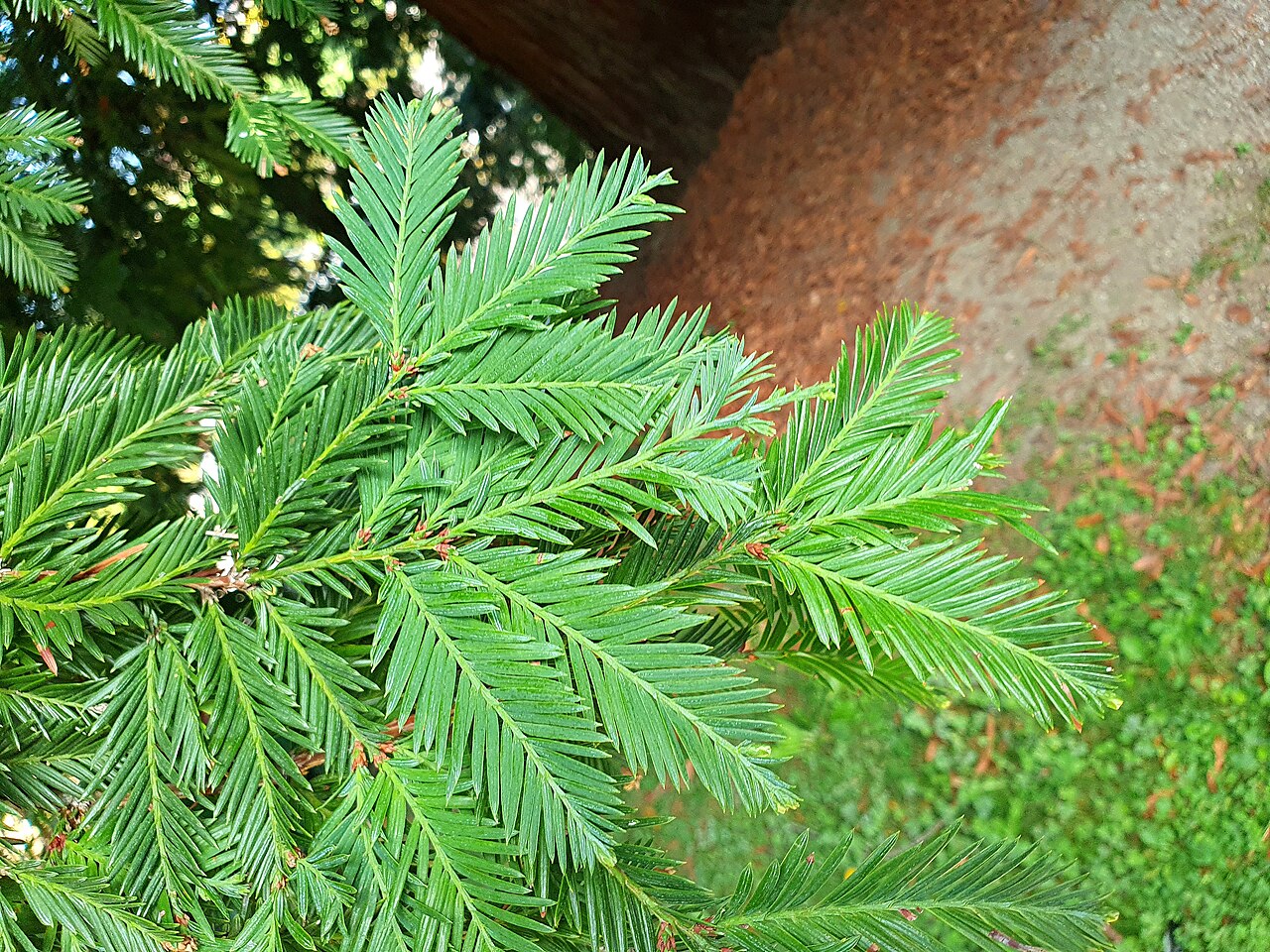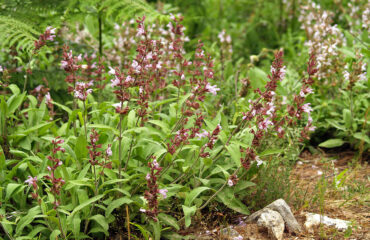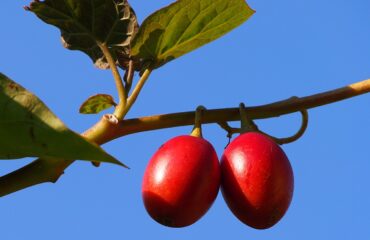Sequoia sempervirens, known as the Coast Redwood, stands as one of the world’s most magnificent trees, often reaching heights exceeding 100 meters and living for thousands of years. Native to the coastal regions of Northern California and Southern Oregon, these evergreen giants are symbols of both natural grandeur and ecological importance. They are prized not only for their imposing size but also for their fine-grained, decay-resistant wood. Propagating Sequoia sempervirens is a fascinating endeavor that can be accomplished through several techniques, each suitable for different purposes and conditions. This guide explores the propagation methods of seed, cuttings, tissue culture, and layering, offering comprehensive insights into growing these majestic trees.
Sequoia sempervirens (Coast Redwood) Propagation Methods
1. Seed Propagation
Seed propagation is one of the fundamental methods for cultivating Sequoia sempervirens, though it requires patience and careful handling to succeed.
1.1. Seed Collection
- Identifying Mature Cones: Collect seeds from mature cones, which are typically ready to harvest in late summer to early autumn. Look for cones that have turned brown and are beginning to open naturally.
- Extracting Seeds: Allow the collected cones to dry in a warm, well-ventilated area until they open and release the seeds. You can also gently shake the cones or tap them to facilitate seed release.
- Cleaning the Seeds: Remove any remaining cone debris and chaff from the seeds by sieving or blowing away the lighter material. This step ensures that only clean seeds are prepared for germination.
1.2. Sowing and Germination
- Cold Stratification: To break seed dormancy and enhance germination rates, store the cleaned seeds in a moist medium, such as sand or vermiculite, and refrigerate them for 1-2 months. This mimics the natural cold period they would experience in the wild.
- Sowing the Seeds: Post-stratification, sow the seeds in shallow trays or pots filled with a well-draining seed-starting mix. Lightly cover the seeds with a thin layer of soil, as they need some light to germinate.
- Germination Conditions: Maintain a cool environment, ideally between 15-20°C (59-68°F), and keep the soil evenly moist. Germination is gradual and can take several weeks to a few months, so patience is key.
- Caring for Seedlings: Provide the emerging seedlings with bright, indirect light. Once they develop their first true leaves, they can be carefully transplanted into individual pots. Gradually acclimate them to outdoor conditions before planting them in their permanent location.
2. Stem Cuttings
Propagating Sequoia sempervirens via stem cuttings is a reliable method to produce genetically identical clones, preserving the characteristics of the parent tree.
2.1. Selecting and Preparing Cuttings
- Choosing Cuttings: Select healthy, semi-hardwood cuttings from the current or previous season’s growth. Ideal cuttings are about 15-20 cm (6-8 inches) long and have several nodes.
- Preparing the Cuttings: Use sharp, sterilized pruning shears or a knife to make a clean cut just below a node. Remove the lower leaves and any secondary branches, keeping only a few leaves at the top.
- Rooting Hormone Application: Enhance root development by dipping the cut end of the cutting into a rooting hormone powder or gel.
2.2. Rooting and Planting
- Rooting Medium: Place the prepared cuttings into pots or trays filled with a well-aerated medium, such as a mix of peat and perlite or a commercial rooting substrate.
- Creating a Humid Environment: Maintain a high-humidity environment by covering the cuttings with a clear plastic bag or a propagation dome. Place them in bright, indirect light to avoid direct sun exposure which can cause excessive heat.
- Monitoring Root Development: Roots generally form within 6-8 weeks. During this period, keep the medium moist but not saturated to prevent rot.
- Transplanting Rooted Cuttings: Once the cuttings have developed a strong root system and show signs of new growth, transplant them into larger pots or into their final garden position.
3. Tissue Culture
Tissue culture, also known as micropropagation, is an advanced technique used for mass propagation of Sequoia sempervirens. This method is highly effective for producing large numbers of plants in a controlled environment.
3.1. Tissue Culture Procedure
- Source Tissue Selection: Start with small, sterile pieces of meristematic tissue from the parent tree, such as buds or young shoots.
- Sterilizing the Tissue: To eliminate contaminants, immerse the tissue in a series of sterilizing solutions, followed by thorough rinsing.
- Culturing in a Nutrient Medium: Place the sterilized tissue in a sterile culture vessel containing a nutrient-rich agar medium. This medium is supplemented with essential nutrients and growth hormones to promote cell division and differentiation.
- Encouraging Growth: Maintain the cultures under controlled conditions with specific light, temperature, and humidity settings. The tissue will initially form callus tissue, which eventually differentiates into shoots and roots.
3.2. Acclimatization and Planting
- Transferring to Soil: Once the tissue-cultured plants have developed sufficiently, transfer them to a soil medium for acclimatization. This phase requires careful management to prevent transplant shock.
- Gradual Acclimatization: Begin by placing the plants in a high-humidity environment and gradually reduce humidity while increasing light exposure. This helps them adapt from the controlled conditions of tissue culture to normal outdoor conditions.
- Final Transplanting: After successful acclimatization, the young plants can be transplanted into larger pots or directly into the garden.
4. Layering
Layering is an effective method for propagating Sequoia sempervirens, particularly when dealing with mature branches. This technique involves encouraging roots to form on a still-attached branch, which can later be separated and planted independently.
4.1. Simple Layering
- Choosing a Suitable Branch: Opt for a healthy, flexible branch that can be bent down to touch the soil without breaking.
- Preparing the Branch for Rooting: Create a small wound or remove a ring of bark on the underside of the branch where it will contact the soil. This action stimulates root formation.
- Securing the Branch in Place: Bend the wounded section of the branch down and bury it in the soil. Secure it with a stone, wire, or peg to keep it in contact with the soil.
- Monitoring Root Development: Roots typically begin to form within several months to a year. Regularly check the buried section for root growth.
- Separating and Planting: Once a robust root system has developed, sever the branch from the parent tree and transplant it into a desired location.
4.2. Air Layering
- Selecting a Branch: Choose a robust, healthy branch that is at least one year old.
- Preparing the Branch: Make a ring cut around the branch, removing a strip of bark to expose the cambium layer.
- Applying Rooting Medium: Treat the exposed area with rooting hormone and wrap it with moist sphagnum moss. Secure the moss with plastic wrap to retain moisture and tie it in place.
- Monitoring Growth: Check the air layer periodically to ensure the moss remains moist and look for root development. This process can take several months.
- Transplanting the Layered Branch: Once a sufficient root system has formed, cut the branch below the rooted area and plant it in a pot or directly into the ground.
5. Transplanting and Initial Care
Ensuring proper transplanting and early care is crucial for the healthy establishment of Sequoia sempervirens, regardless of the propagation method employed.
5.1. Preparing the Planting Site
- Soil Preferences: Sequoia sempervirens thrives in well-draining, slightly acidic to neutral soils (pH 5.5-7.0). The soil should be rich in organic matter and retain moisture effectively.
- Selecting the Planting Site: Choose a location with full sun to partial shade and ample space for the tree to mature. These trees can grow exceptionally tall and wide, so space accordingly to accommodate their growth.
5.2. Planting and Watering
- Transplanting Process: Dig a hole sufficiently large to accommodate the root system of the propagated plant. Position the plant in the hole, backfill with soil, and water thoroughly to settle the soil around the roots.
- Watering Needs: Water young plants regularly to maintain consistent soil moisture. Although mature Coast Redwoods are drought-tolerant, young trees require regular watering, especially during dry spells, to establish deep roots.
5.3. Fertilization and Pruning
- Nutrient Requirements: Apply a balanced fertilizer or organic compost in the spring to support healthy growth. Sequoia sempervirens generally does not require heavy fertilization but benefits from a nutrient-rich soil environment.
- Pruning Practices: Minimal pruning is needed as these trees naturally develop a symmetrical shape. Prune only to remove dead or diseased branches or to shape the tree if necessary.
Conclusion
The propagation of Sequoia sempervirens through seeds, stem cuttings, tissue culture, and layering provides diverse approaches to cultivate these extraordinary trees. Each method has its own set of advantages and considerations, offering flexibility to gardeners and horticulturists in different environments and for various purposes
Share this article


